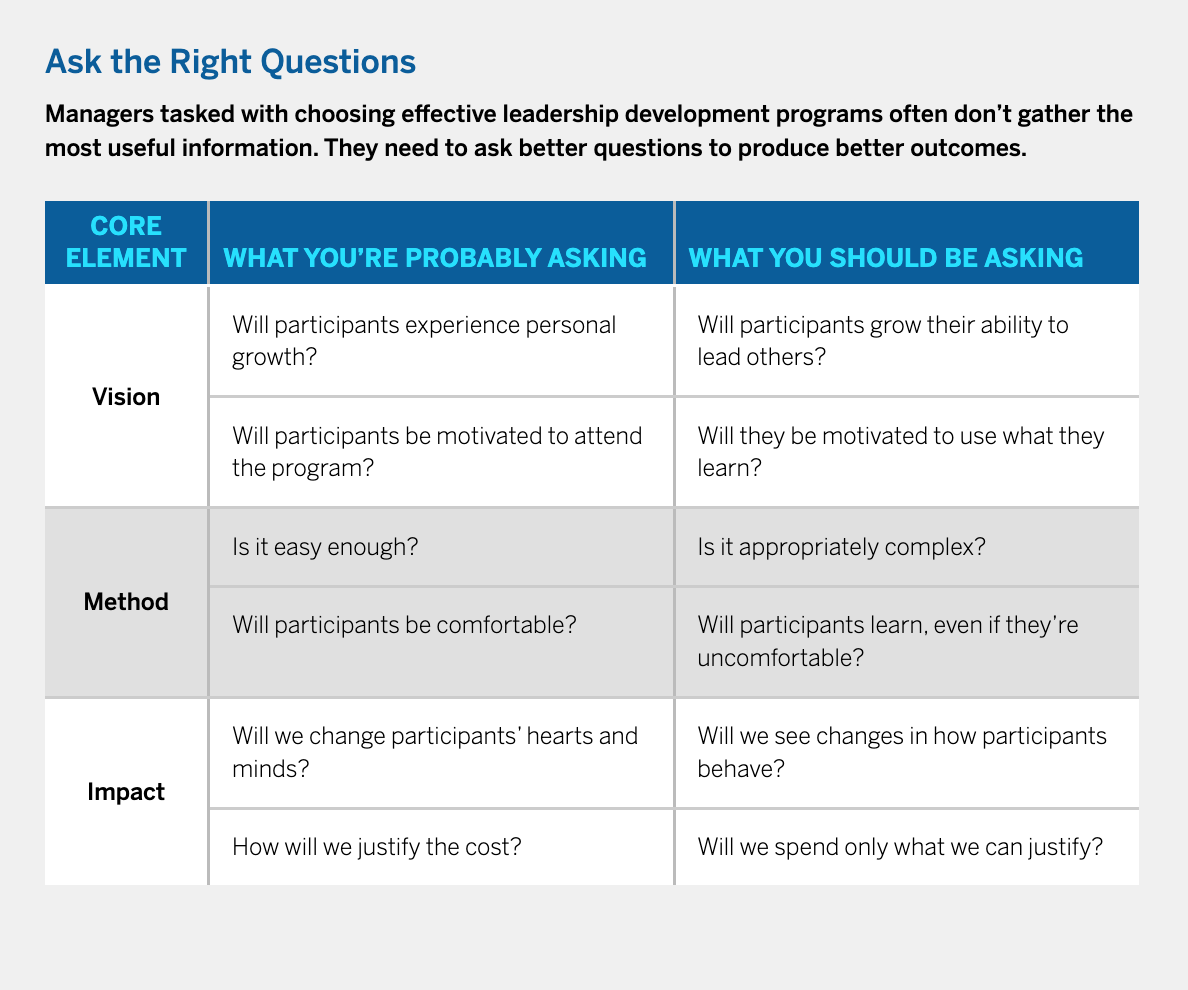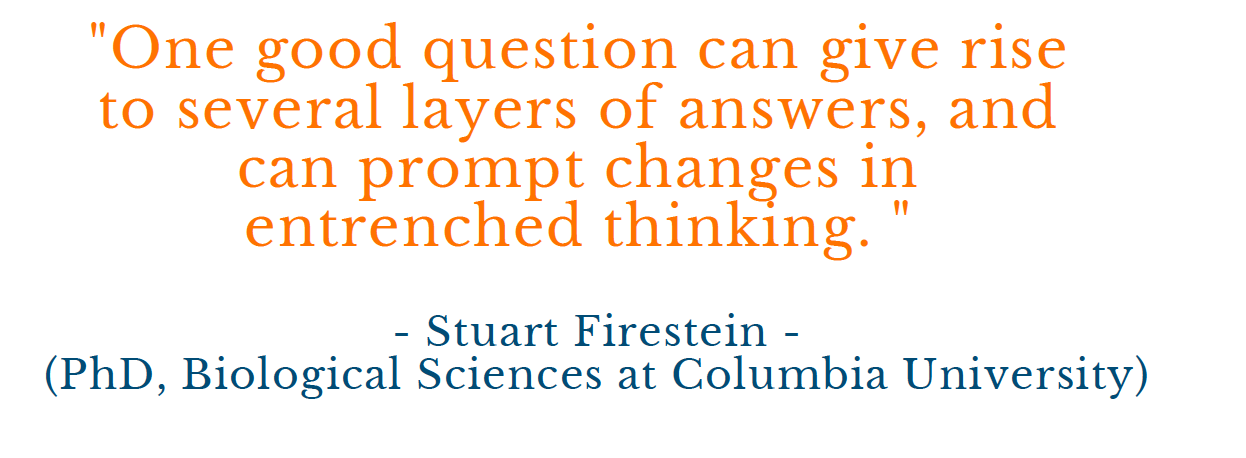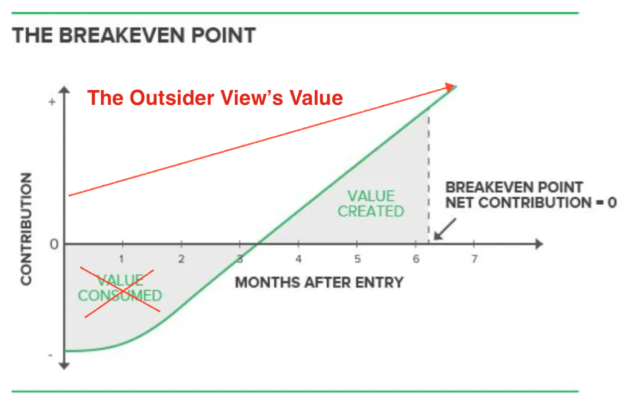How do you design your leadership development program? How do you evaluate and – most important – how do you redesign these programs?
Some of the key characteristics of a successful leadership development program are:
- a blended approach: mentoring, workshops, group assignments, on-the-job assignments, reading, time to reflect, blending online and offline, on various locations
- build a platform of enduring learning and leadership development; the larger part of learning takes place at work, while on the job; create a thriving environment for leaders to deploy what they’ve learned; it’s not a personal development program, but to lead others and drive a successful organizational development; design a customer and workforce-centric program, instead of a leadership-centric program; after all, it’s not (solely) about them but about their value to others and to the company
- deploy nowadays’ technology that inspires, engages and provokes people’s thoughts and behaviours; AI, gamification, behavioural interventions, collaborative learning and collective intelligence can all be built-in to elevate and deepen learning from each other
- design with reality as well as the future in mind: collect vetted insights, by means of collective intelligence approaches such as CircleLytics Dialogue to learn about priorities, challenges and upcoming changes that require (new) leadership. Stay close to the people who know best what’s needed most, as research show, to become more effective and add more value; for this don’t limit yourself to insights from participants, yet also from employees.
What do these guys teach us?
A recent article in MIT Sloan Management Review inspired us to cluster and assess our own experiences and those of our customers’. The article was authored by Hannes Leroy Moran Anisman-Razin and Jim Detert.
CircleLytics is applied to collect qualitative, validated insights and recommendations, far beyond what focus groups and surveys can deliver. These insights are essential to your design and redesign. Hence, to answer any question your CFO should ask about the impact your programs make. “Spend only what you can justify” (as the article mentions), and added to that, take opportunity costs into account: what else can be done with the costs that are involved.

The authors highlight that those responsible for selecting such programs often struggle. “Struggle to show how their spending has produced significant, enduring changes in participants’ individual capacities or collective outcomes, yet operating executives continue to fund these efforts without requiring such accountability.”
They further on the topic by reframing and rephrasing evaluative items into meaningful questions. The following table can be found in their article as well. They emphasize better questions to prompt their thinking and improve (re)designs.

Some of our own reflections
Prepare to followup on results of your evaluation and alter your program accordingly. While evaluating, don’t ask questions about things you won’t change. That’s really acceptable. You might have valid reasons beyond participants’ views on the leadership program. Participants might overlook longterm aspects that you as a professional, or outside experts, consider of essential value to the company.
Still, monitor closely how your assumptions work out over time.
By corollary, deliberately identify dynamic aspects of the program that with surety can and will be redesigned, once evaluation underpins its necessity; when working with external vendors of such programs, select the ones that are clearly open for feedback and redesign. Don’t hold back on improving your program, merely by vendor’s argument that “other companies want this”, while your participants’ feedback clearly underpin that change is needed.
LDP managers are more keen on evaluating and redesigning programs once they have the better tool perform these evaluations: surveys nor focus groups pay off sufficiently. You need evidence, a data-driven approach to validate your program and clarity on what to change, how and why.
When evaluating your leadership programs, take into account that up to 80% of learning evaporates in – worse case a matter of weeks to months. Hence, evaluations should be repeated, preferably after 3 weeks, 6 weeks and 20 weeks, but any other cadence that fits your case: go for it. Over time, you can better assess the impact, the strengths and weaknesses of the program.
In addition to evaluative purposes, by asking open questions you can effectively increase (and refresh) participants’ awareness. Basically, remind them of the program, how they acted on that, made alterations to their leadership style, etc.

What prompts people’s thinking?
Here are a few questions to consider, and that have been tested to work. Ask these questions again after some more weeks and months to learn how the program’s effectiveness evolves, grows or diminishes.
❓How did the program change your habits regarding [ ……. ] and can you explain what happened, so others can learn from that?
❓What aspect of the program affected you most, on a personal level, and can you share what this means for your leadership at the organization?
❓How did the program change your thinking about [ ……. ] and can you explain the benefits to the organization?
❓Can you critically reflect on the most striking impact on your team, since and because of joining the program?
❓How would you alternatively have spent 25% of the money on this program, now that you’ve finished the full program?
❓What situation(s) did you encounter by putting to work what you’ve learned?
❓What one suggestion do you have to significantly improve the program’s effectiveness for future candidates and what’s your thought about the benefits of this suggestion behind this?
❓What do you consider an aspect of our company (systems, culture, anything) that holds you back on deploying all you’ve learned?
❓How would you alternatively have spent 50% of the time this program has taken?
❓What did the program bring you, that changed the way you lead, yet diminished over time? Why did this happen you think? Can you change it back?
❓What surprised you most after […..] in the way you lead others to perform? Can you reflect on that?
❓Is anything blocking you from leading others and developing our organization that should be addressed in these programs?
❓What changed in markets, culture or anything, that impacts how we (should) lead the organization?
It’s the people, not the participants ….
Don’t forget, their leadership, hence, your program should bring value to the people and organizational development, with positive customer and revenues driven outcomes. Ask employees of the participants’ departments what’s their reflection on their leadership’s development, impact on culture and quality of management. Since these are critical factors for talent to stay or go, it makes sense to take these aspects into account and become more effective. Furthering on this, employees can be engaged to build more intelligent programs, tailored to talent’s needs. It doesn’t make sense, and CFO’s should question this, if your leadership development program is designed topdown, without sufficient input from employees, especially newly onboarded talents.
❓What do you wish for your leadership to develop better, for the benefits of the whole department/company?
❓What do you see your leadership improving at, and what’s the meaning for the team in your eyes?
❓What’s needed most from leadership to help you develop and commit to the long term at our company?
❓How would you promote our leadership style to job applicants?
❓What do you doubt or don’t like most about leadership in general at our company? What’s the effect right now?
❓What do you doubt or don’t like most about your specific leadership? What would be the positive outcome of changing this?
Evaluation is great, preparation is another…
CircleLytics Dialogue is also deployed to prepare for upcoming programs or modules of your program. This way, you can do check-ins, assign tasks, set and learn about expectations, and more. Consider these questions to ask some days, but not more than two weeks in advance:
❓In a few [days, weeks] you’re invited to module N of the program. What do you expect to be better at, for the people you lead, upon finishing this module?
❓What do you bring to the table, during this upcoming module N and how can you unleash that value or experience?
❓Can you work on the following three challenges to prepare for the next part of program. Others will learn from your perspectives, as you can from theirs.
It’s in your hands
In all of above instances, open questions ignite people’s thinking, and CircleLytics’ unique approach secures their learning from others’ different perspectives. This deepens theirs as well as your learning and understanding. Design, evaluate, redesign based on collective intelligence from employees, alumni leaders and managers and (prospective) participants. Leadership development programs require first of all your leadership, open to multi perspectives to create value that lasts. Again and again.
Plan a meeting in our agenda to exchange thoughts about how CircleLytics can elevate your great work and LDPs here.



